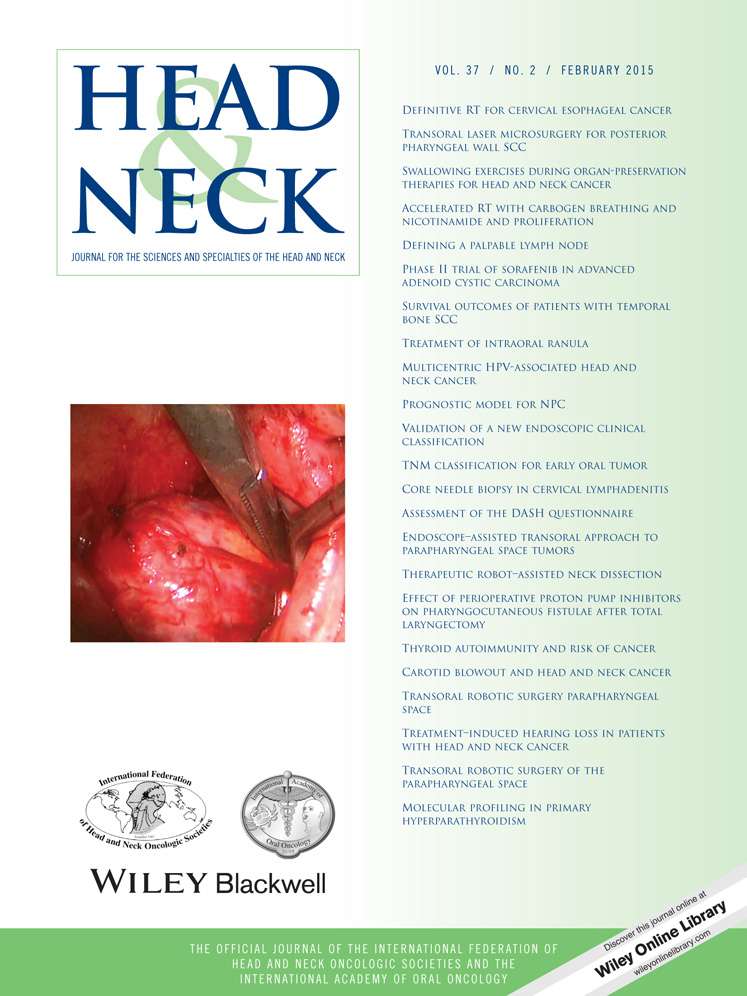Survival outcomes of patients with temporal bone squamous cell carcinoma with different invasion patterns
Abstract
Background
The correlation between the survival rate and various invasion patterns of patients with temporal bone squamous cell carcinoma (SCC) is unclear. This study was performed to compare the survival outcomes of these patients to disclose the correlation.
Methods
The cases of 39 patients with temporal bone SCC who underwent surgery between January 2004 and December 2012 were reviewed.
Results
The 2-year overall survival rate was 56.9%, and it was 22.3% for patients with stage IV disease, and 100% for patients with stage I–III disease. Patients with parotid invasion (n = 11), temporomandibular joint (TMJ) involvement (n = 8), and middle ear surgery (n = 7) before temporal bone malignancies were diagnosed had poor survival with statistical difference.
Conclusion
Patients with parotid gland, TMJ involvement, and previous middle ear surgery for chronic otitis media had poor outcomes. © 2014 Wiley Periodicals, Inc. Head Neck 37: 188-196, 2015




